

 Entrance to the Bazaar, 20 Nov 1990
Entrance to the Bazaar, 20 Nov 1990Istanbul is one of my favourite cities. At present there is no-one posting an Istanbul Daily Photo, so I thought I would plunder my photo bank to bring a glimpse of this most magical place from my point of view.


 Entrance to the Bazaar, 20 Nov 1990
Entrance to the Bazaar, 20 Nov 1990



 The view from upstairs at Tuncay's shop, looking out the little window.
The view from upstairs at Tuncay's shop, looking out the little window.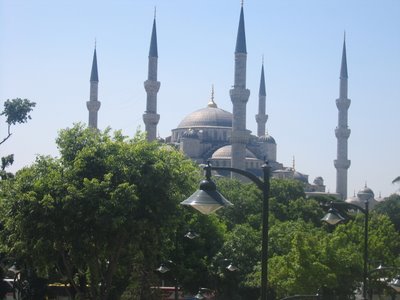



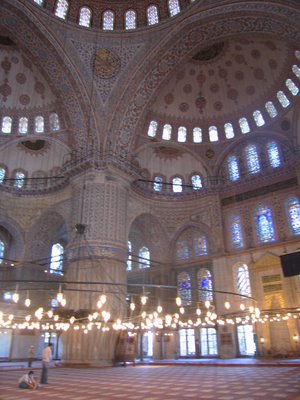
So many words have been written about this mosque, and of course, comparisons made betwen it and Aya Sofya (usually in the latter's favour), that it's pretty impossible to add more. I do love visiting here because it is a working mosque.
This Turkish style of mosque has been copied in one of Sydney's mosques - the Gallipoli Mosque at Auburn. It serves a mainly Turkish community.
 Looking towards the Aya Sofya from the Blue Mosque.
Looking towards the Aya Sofya from the Blue Mosque. Interior gallery
Interior gallery
 View looking out from gallery
View looking out from gallery Aya Sofya 13 July 1989
Aya Sofya 13 July 1989
Arguably İstanbul's most famous building. There are a million photos of it, so in my most recent trip I tried to take some "different" ones, hence the dark spaces in the Gallery.
Inside is simply astounding, and I stare in awe at the architectural miracle that enabled this to be finished in 537. How does that central dome soar above with seemingly no support? [By the way, it has been replaced several times after earthquakes] The answer is that it is supported by 40 massive ribs constructed of special hollow bricks, made in Rhodes, resting on four huge pillars concealed in the interior walls. Almost 1000 years later, the great architect, Sinan, used the same technique in designing the Süleymaniye Mosque.
It was the greatest Christian church of all until 1453, when Mehmet the Conqueror turned it into a mosque. Being equally as significant to Christians and Moslems, I think Atatürk did the right thing turning it into a museum in 1934, so everyone can appreciate its magnificence.
Uncovering the mosaics (covered in plaster, but not destroyed, during the Islamic period) and restoration continues, and there is usually scaffolding, but that does not detract from a visit to this World Heritage site.
 Inside the Harem - the Imperial Antechamber (Hünkar Sofası)
Inside the Harem - the Imperial Antechamber (Hünkar Sofası)
 The area of the Fourth Court
The area of the Fourth Court
 A copy of the oldest peace treaty, the Kadesh Treaty, drawn up in the 13th century BC between the Egyptians and Hittites.
A copy of the oldest peace treaty, the Kadesh Treaty, drawn up in the 13th century BC between the Egyptians and Hittites.





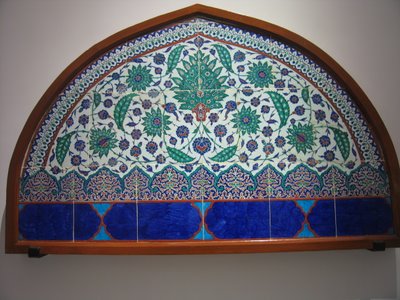
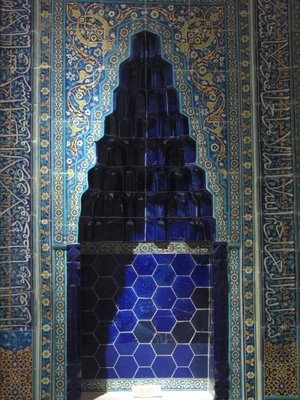

 Part of the Tiled Kiosk, and the cafe
Part of the Tiled Kiosk, and the cafe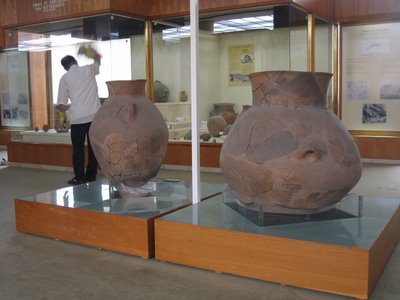 Giant earthenware pots, and worker cleaning the cases.
Giant earthenware pots, and worker cleaning the cases. 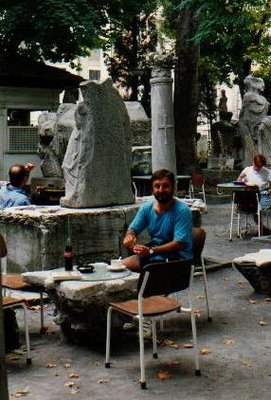 Piero at the cafe, 13 August 1989.
Piero at the cafe, 13 August 1989.